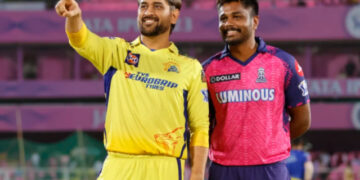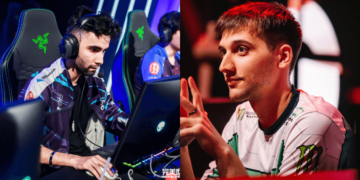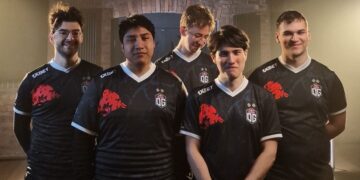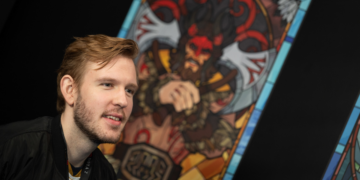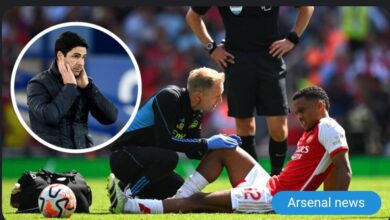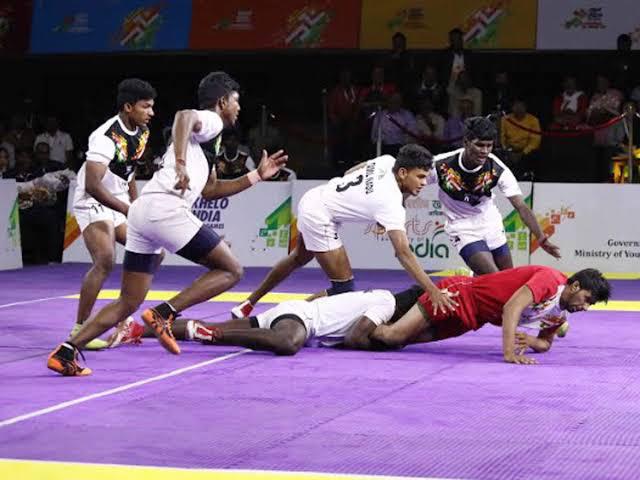
Analysis on why William Saliba stepped into a midfield role against Slavia Prague and how Mikel Arteta’s tweak helped Arsenal stay perfect in the Champions League.
Arsenal went to Prague, won 3-0, and kept yet another clean sheet – which, at this point, has become routine for the Gunners. That’s eight clean sheets in a row, if you’re counting, and not a single goal conceded in the Champions League so far, leading some to believe Arsenal are the best team in the world at the moment.
But while the formidable defensive numbers tell one story, the real curiosity came with William Saliba casually turning into a midfielder during the match.
Yes, the same William Saliba who’s built like a marble statue and normally doesn’t move further forward than “arm’s length from Gabriel”.

William Saliba’s heatmap for Arsenal during their 3-0 win over Slavia Prague in the Champions League, Tue 4 Nov.
William Saliba Midfield Role Against Slavia Prague
If you spotted Saliba popping up in midfield on Tuesday night and thought, hang on, has he just decided to be Declan Rice now?, you weren’t alone. But as always with Mikel Arteta, there was method behind the chaos.
When asked after the game, Arteta basically admitted the tweak was a last-minute bit of tactical improvisation:
“It was related to the way their No. 9 makes the press and where we could find certain advantages and time, because if not everything is absolutely man-to-man and it’s really a difficult game to play, especially after direct play. We could have done better. It’s something we haven’t had time to train really.”
Translated from coach-speak: Slavia Prague were going man-to-man, Arsenal were suffocating for space, and Saliba was instructed to pretend he was a midfielder so everyone else could have more space.
Why Saliba Was Stepping Into Midfield
Slavia Prague pressed Arsenal in a strict man-to-man system, meaning every Arsenal outfield player had a direct marker. Normally, in these scenarios, the only “free” player is the goalkeeper – in this case, David Raya.
However, Saliba’s movements were designed to exploit that structure. By stepping into midfield, he forced Slavia’s striker (Tomas Chory, and later Mojmir Chytil) to make a difficult choice: either follow him into midfield, leaving Raya free, or hold position and give Arsenal an overload further up the pitch.
When Chory stayed high, Raya gained time and space on his stronger right foot, helping Arsenal progress the ball more cleanly through Slavia’s press. When Chory followed Saliba, space opened up between Slavia’s midfield and defensive lines, allowing the likes of Ethan Nwaneri and Declan Rice to find pockets between markers.
It was another clever, simple tweak deployed by Arteta that could help Arsenal finally win the Premier League.
How Arsenal’s Structure Gave Raya Time on the Ball
You could see this dynamic clearly in several first-half sequences. Saliba would drift forward, dragging Chory with him, while Slavia’s right winger (Lukas Provod) pressed from out to in, trying to close down Raya’s strong foot.
Normally, that sort of press forces goalkeepers into rushed long balls. But because of Saliba’s positioning, Raya could open his body and use his right foot comfortably, picking out passes beyond Slavia’s first line.
That’s precisely what Arteta meant when he mentioned “finding time”. One long ball to Declan Rice almost produced a breakthrough, and later, a similar pattern led to a move that won the corner for Arsenal’s opening goal.
These little details, when executed well, make Arsenal look like a team fully capable of winning some much-needed silverware for Arteta.
The second major benefit of Saliba’s role came when the Slavia striker stepped forward. By luring him out, Arsenal created a 2v1 overload between Slavia’s defensive and midfield lines – most often involving Saliba and Nwaneri against midfielder Michal Sadilek.
This dynamic featured prominently in the build-up to the penalty incident. With Slavia’s shape stretched, Mikel Merino pinned the wide centre-back, Bukayo Saka pinned the wing-back, and the resulting space allowed Nwaneri to drive forward. His shot was parried, but it stemmed directly from that manipulated overload.
Will Arteta Continue Using Saliba In Midfield?
Arteta admitted the team hadn’t trained extensively for this role, which explains a few moments of hesitancy in Arsenal’s build-up. But we are seeing this type of tweak increasingly more often among elite sides. Pep Guardiola has used John Stones in a similar vein in recent years.
And no, Saliba isn’t suddenly going to start moonlighting as a midfielder every week – this was purely a reaction to Slavia’s man-to-man press. But it does show how adaptable Arsenal have become.
They’re comfortable enough in possession to let their centre-backs get creative and good enough defensively that it doesn’t feel like a risk.
After a tricky test at Sunderland, Arsenal have a crucial run of games against Tottenham, Bayern Munich, and Chelsea to come following the international break. No pressure then.
But with Arsenal on eight clean sheets and counting, Mikel Arteta has earned the right to keep tweaking. Especially when one of his tweaks involves turning his Rolls-Royce of a centre-back into a part-time midfielder.



